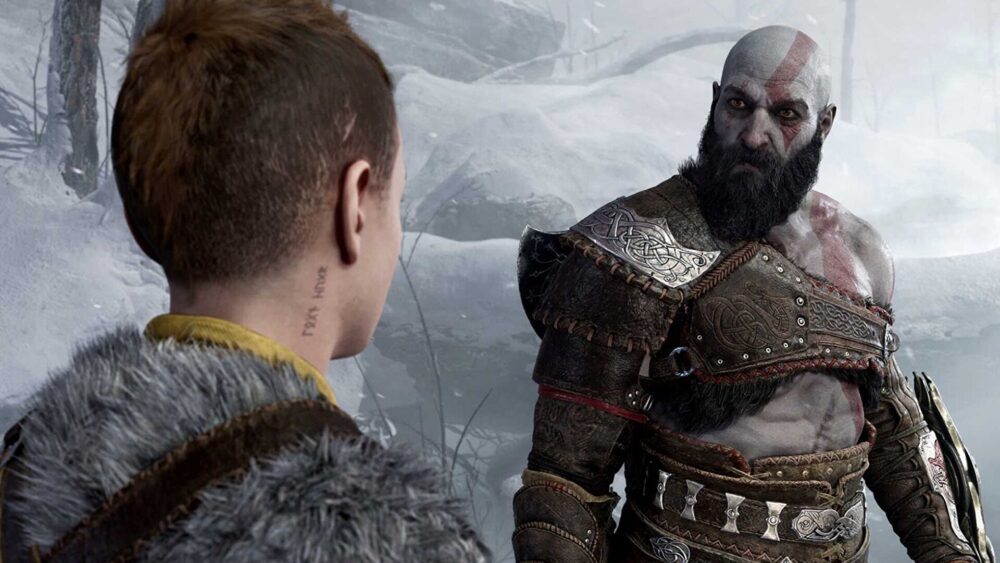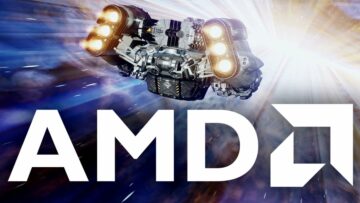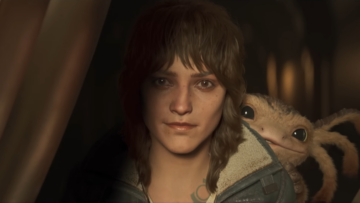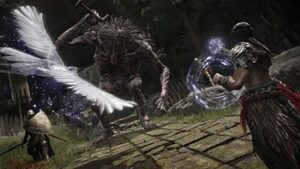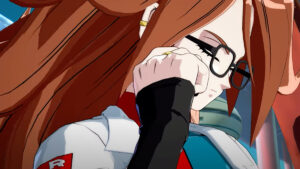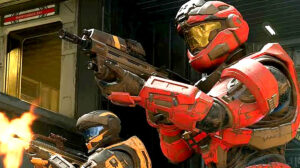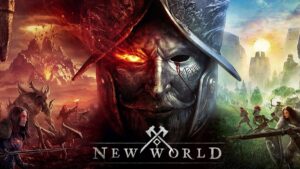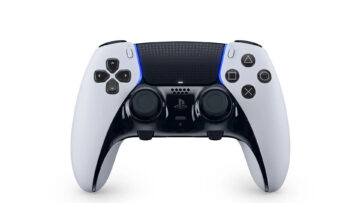This piece contains spoilers for God of War Ragnarok!
I’ve noticed a common theme within recent PlayStation exclusives: the addition of the dual protagonist perspective. For example, you play as both Ratchet & Rivet in Ratchet & Clank: Rift Apart, and as Ellie and Abby in The Last Of Us Part 2. However, I think that Santa Monica Studios absolutely nailed the dual protagonist narrative in God Of War Ragnarok.
Embarking on my journey with Kratos and Atreus filled me with glee. Their father and son relationship was my favourite aspect of the franchise reboot, alongside that addictive Leviathan Axe recall thumping into Kratos’ raised right hand.
Here, the dual protagonists open the narrative scope and allow players to follow the perspective of both Kratos and Atreus and explore their relationship to the wider Norse realms and companion characters like Freya.
It makes a big difference. The player already understands the mindset of Kratos and his thoughts on Atreus. However, as the game unfolds, the player slowly starts to unravel clues to Atreus’ growing maturity and emotional strength.
The Atreus segments give us enough time to spend with characters that Kratos would view as enemies. Atreus’ relationship with Odin, Thor and Thrud present the player with valid emotional connections with antagonistic presences by flipping the table on our perceptions. It was fantastic to team up with Thor and command him to throw Mjolnir to attack enemies on my behalf. I was surprised to get a more intimate view of the Thor, Sif and Thrud household, and it also mirrored the fracturing relationship between Kratos and Atreus.
The phrase “For our children, we must be better” is at the core of Ragnarok, framed perfectly in the powerful ending of the climactic battle with Thor. Kratos uses kindness and compassion to prevent unnecessary bloodshed. Kratos finally trusts Atreus by giving him the ultimate choice on how to deal with Odin. “This is your choice son, I trust you,” he says and Atreus makes the difficult but correct choice of empathy – to follow the path of justice over rage and violence.
“We survived today because of your choices. Who to trust. Who to call friend. Son. You are ready,” Kratos says. Atreus replies, “Remember our promise.” Kratos responds, “Loki will go.” With an emotional tremble, Kratos then touches his heart whilst saying that, “Atreus… remains.”
The epilogue is emotionally effective because we finally get to face the colossal boss – the emotional breakthrough. Kratos finally believes that Atreus has the power to have autonomy in his life and to be trusted. Kratos learns that without Atreus’ company, Kratos can easily slide back into the killing monster witnessed by the death of Heimdall. Atreus ultimately makes Kratos a better God. Throughout it all, the dual protagonist perspective allows us to follow Kratos and Atreus on their separate journeys, which ultimately brings them closer together, to value their unique father-son relationship.
Still here? I couldn’t let 2022 go without talking a little about another PlayStation exclusive, one that ate up a lot of my year. I want to focus on the accessibility aspects of this second PlayStation game, which is Horizon Forbidden West. (I played it on PS4 because the PS5 did not work for my accessibility setup.)
The plethora of accessibility settings present in Forbidden West gives players control over their gameplay and the chance to align it with their abilities to ensure that enjoyment isn’t affected by unnecessary barriers. It’s a great start for Guerrilla, able to design Forbidden West from the beginning with accessibility in mind. The studio’s attempt is extremely well executed and it means more gamers can enjoy the amazing characters and wonderous world of Forbidden West.
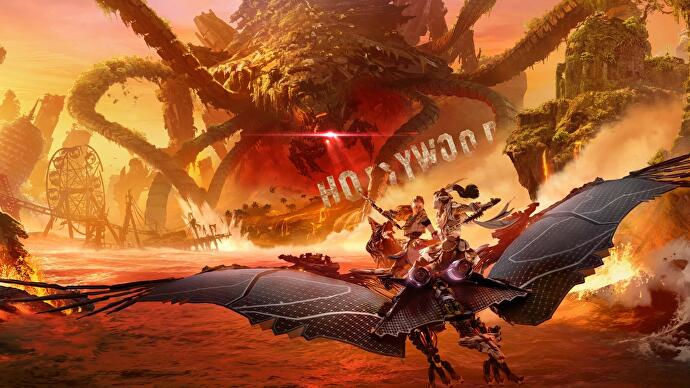
Guerrilla understands that disabled gamers don’t just want an easy mode, but they do want control over important aspects of gameplay, such as how much damage Aloy receives or how much damage enemies take. The main aspect of combat is to accurately tear off enemy parts for crafting purposes. However the precision necessary to do this can be difficult to achieve, as enemies are extremely mobile.
Because of this, Forbidden West has added the option to loot those specific parts once you get the kill. This option was great for me as it provided a safety net when fatigue caused me to forget to tear parts off in battle. The auto-heal option removed the need to press up on the d-pad, especially useful when I made the ridiculous decision to fight a Tremortusk and two Scrappers with low tier weaponry. If you assume that I survived the massacre, you’d be absolutely right… if right actually meant wrong.
I’m an advocate for the implementation of toggles and Guerrilla has happily obliged here too. There are toggles for aiming, opening the weapon wheel, crafting, Shieldwing activation and Pullcaster. The crafting toggle is clever: you can easily craft arrows or ammo whilst in the weapon wheel by tapping X instead of holding it. During combat it made a huge difference by reducing fatigue and unnecessary constant muscle usage. This is supplemented with the option to increase the weapon wheel time slowdown. It doesn’t completely stop time, but slows it enough for me to choose the right weapon, ammo type or alternate fire.
Guerrilla has added sprint when pushing the left stick fully forward, and this option enabled me to slide (by pressing crouch) for the first time. But the clever bit is that if you are crouching and push the stick fully forward you don’t ruin stealth by accidentally sprinting. This option should appear in all games because sliding is useful but, more importantly, super awesome.
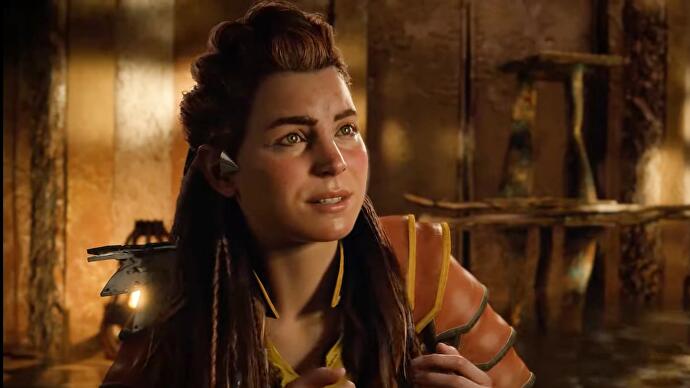
I wouldn’t say that Horizon Forbidden West has the best control remapping system seen in PlayStation exclusives – Insomniac’s Spider-Man Miles Morales is still the star – but it’s not far off. It’s flexible enough to alter the button layout, and change layouts for different contexts, such as when aiming, separate joint actions or layer actions on one button. For example, the new ability to glide using the Shieldwing can be assigned to most face buttons because it only activates after jumping. The remapping surprisingly allows you to layer the Interact action onto other buttons; I layered it to the dodge action thus freeing up the triangle button to be used as the “use trap” button. The great aspect of the “use trap” button is that if you hold it, it accesses your backpack where you can craft traps or swap between them without using the d-pad.
The choice to assign actions when aiming is great. You have to consider controls for your Pullcaster, for activating the essential Concentration mode which slows time for increased accuracy, and for the first time your weapons have multiple unlockable alternate fires. The additional option to automatically activate Concentration mode when aiming makes gameplay intuitive, fluid and more immersive.
The only accessibility issue with Horizon Forbidden West is that the process to swap between three alternate fires in the weapon wheel requires the use of the d-pad. There should be an option to either use the left stick or triggers to swap. Alt fires are essential tools in Aloy’s arsenal and swapping between them is usually a choice between life or death. Beyond this, Forbidden West continues the progress we’re starting to see in accessibility. See you in 2023!
- Action Adventure
- amazon prime gaming
- axie infinity
- blockbuster
- Casino Games
- coingenius
- EA Sports
- Eurogamer
- Evil Geniuses
- Games of 2022
- Gaming
- gaming headset
- gaming pc
- God of War: Ragnarok
- Horizon Forbbiden West
- madden nfl
- Nintendo
- Online casino games
- pc games
- plato
- plato ai
- plato data intelligence
- plato game
- plato gaming
- platodata
- platogaming
- playstation
- prime gaming
- ps4
- ps5
- Team SoloMid
- xbox
- zephyrnet
